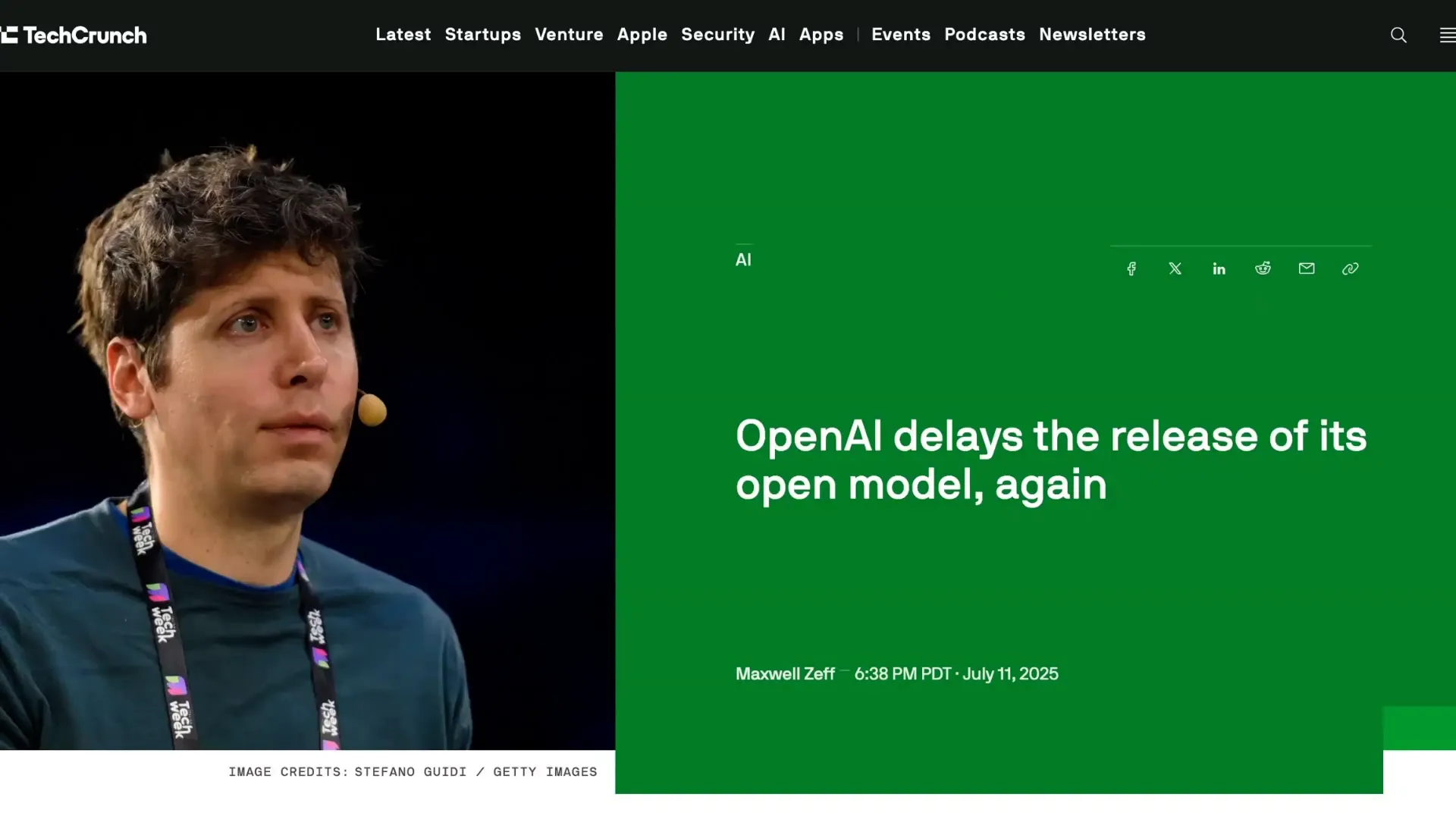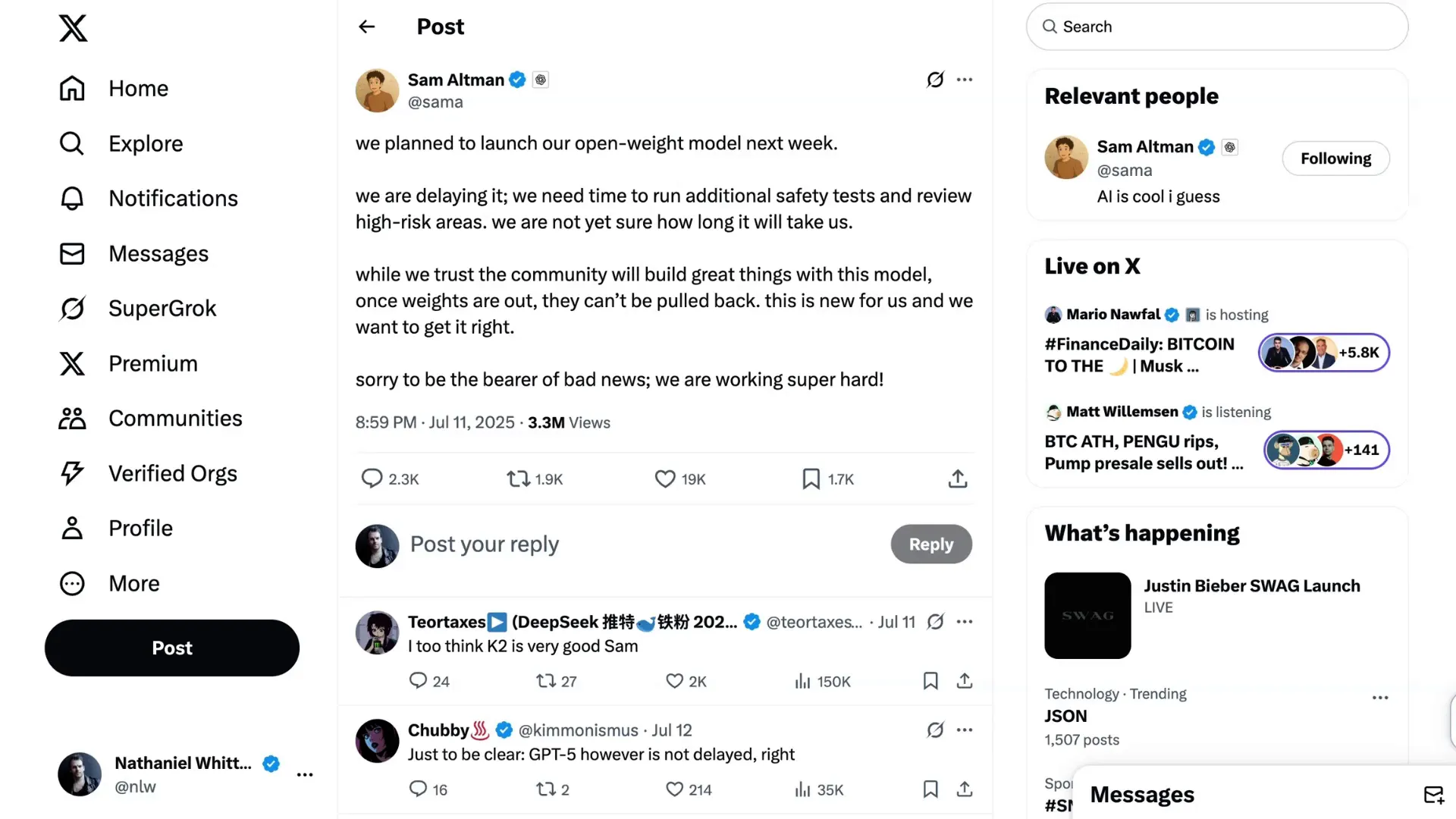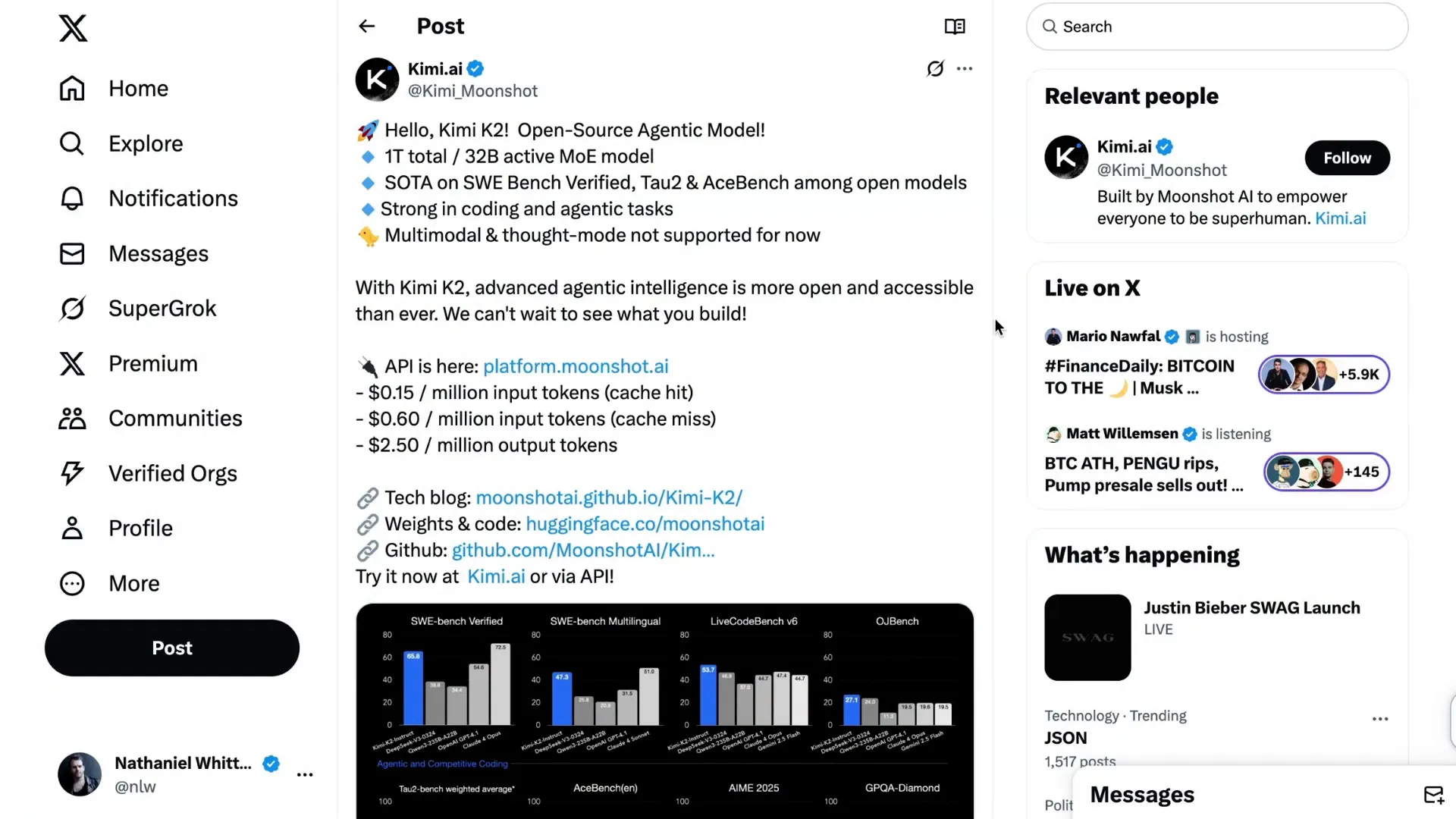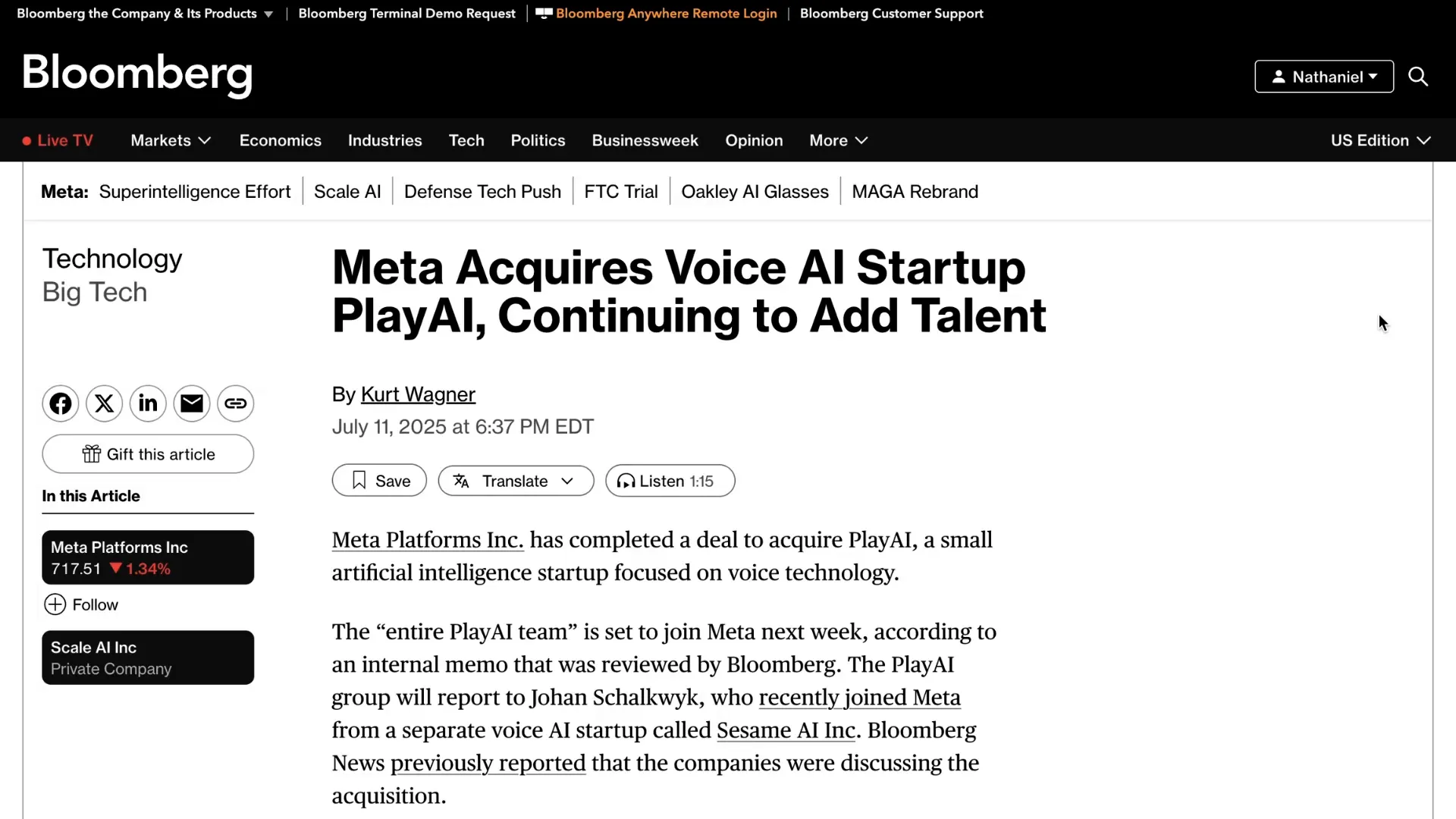OpenAI's Open Model Delayed Again: What This Means for AI in Recruiting and Beyond
In the fast-evolving world of artificial intelligence, every delay and breakthrough has rippling effects across industries, including AI in recruiting. Recently, OpenAI announced yet another delay in the release of their much-anticipated open weights model. This news, shared by The AI Daily Brief: Artificial Intelligence News, highlights not only the challenges of deploying cutting-edge AI safely but also the fierce competition and rapid innovation unfolding globally. In this article, we’ll explore the reasons behind OpenAI’s delay, the emergence of competitive AI models like China’s Kimi K2, exciting developments in embodied AI robotics by Hugging Face, and Meta’s strategic acquisition in the voice AI space. Together, these stories paint a vivid picture of the current AI landscape and its implications for AI in recruiting and other domains.

OpenAI’s Open Weights Model: Delayed for Safety and Quality
OpenAI’s open weights model has been eagerly awaited by many in the AI community, especially those who champion open-source AI development. However, OpenAI CEO Sam Altman recently revealed on Twitter that the release, initially expected in June and then later in the summer, would be delayed again. The reason? The team discovered some issues needing further safety testing and review of high-risk areas.
"We are delaying it. We need time to run additional safety tests and review high risk areas. We're not sure yet how long it will take us. While we trust the community, we'll build great things with this model. Once weights are out, they can't be pulled back. This is new for us, and we wanna get it right." — Sam Altman
This statement underscores the unique challenge OpenAI faces: once an open weights model is released, it is impossible to retract, making the stakes incredibly high. OpenAI researcher Aidan Clark further emphasized this point, saying that while the model’s capabilities are phenomenal, the bar for an open-source release is set very high to ensure safety and quality.
"Capability wise, we think the model is phenomenal, but our bar for an open source model is high, and we think we need some more time to make sure we're releasing a model we're proud of along every access. This one can't be deprecated." — Aidan Clark
For industries like AI in recruiting, where models may interact with sensitive data and impact hiring decisions, the emphasis on safety and reliability is paramount. Deploying a model prematurely could lead to unintended biases or errors with significant consequences.

Competition Heats Up: China’s Kimi K2 Challenges OpenAI
While OpenAI works diligently to perfect their model, competition is intensifying globally. A Chinese AI lab called Moonshot AI recently released a model named Kimi K2 that claims to outperform OpenAI’s models on several benchmarks. This has fueled speculation that competitive pressure might be influencing OpenAI’s cautious approach.
Kimi K2 has made impressive strides in various domains:
- Coding benchmarks: Verified results show Kimi K2 surpassing GPT-4.1 and nearly matching Cloud 4 Opus.
- Mathematics benchmarks: On the AIME 2025 math test, Kimi K2 outperformed GPT-4.1, Cloud 4 Opus, and Gemini 2.5 Flash.
Though some comparisons are cherry-picked, practical feedback from users has been positive. Pietro Serrano, a respected AI practitioner, highlighted Kimi K2’s exceptional tool-calling abilities and agentic loops, allowing it to call multiple tools in parallel and reliably know when to stop — a crucial feature for real-world applications.
"Kimi K2 is so good at tool calling and agentic loops that can call multiple tools in parallel and reliably and knows when to stop, which is another important property. It's the first model I feel comfortable using in production since Claude 3.5 SONNET." — Pietro Serrano
Another AI analyst, Manlos Didi Das, noted that Kimi K2 has experienced a "mini deep seek moment," ranking 14th on OpenRouter ahead of Grok 4 and GPT-4.1. The model’s architecture employs a mixture of experts to reach a trillion total parameters, echoing techniques used in DeepSeq v3.
However, insiders caution against assuming a direct cause-effect relationship between Kimi K2’s rise and OpenAI’s delay. Yu Chen Jin, a credible source, shared that OpenAI’s delayed model is smaller than Kimi K2 and that an undisclosed issue—possibly requiring retraining—was the actual reason for the postponement.
"Rumors that OpenAI delayed their open source model because of Kimmy are fun. But from what I hear, the model is much smaller than Kimmy K2, super powerful, but due to some frankly absurd reason I can't say, they realized a big issue just before release, so they probably have to retrain now." — Yu Chen Jin

Embodied AI Takes a Step Forward with Hugging Face’s Reachy Mini Robot
Beyond language models, embodied AI is gaining momentum. Hugging Face recently made waves by collecting half a million dollars in preorders on the first day for their Reachy Mini robot, an open-source desktop robot roughly the size of a teddy bear. This robot serves as a prototype platform for interactive AI experiences, featuring microphones, speakers, and cameras, but notably lacks arms and legs.
Hugging Face also unveiled plans for a full-sized humanoid robot made from readily available components, signaling their commitment to advancing embodied AI. The Reachy Mini’s demos, although primarily showcasing head movements synchronized to music beats, have captivated enthusiasts and developers alike.
TechCrunch even dubbed Reachy Mini the "Seinfeld of AI hardware," implying that while it might not perform complex tasks yet, it remains engaging and promising.
This early-stage effort makes sense in the context of the broader AI ecosystem. Embodied AI and robotics are still in their infancy, and developer-focused prototypes like Reachy Mini are essential for sparking innovation and attracting a tinkerer community eager to explore new possibilities.

Meta’s Voice AI Acquisition: Play.ai Joins the Superintelligence Team
In the realm of AI in recruiting and beyond, voice technology plays an increasingly important role. Meta has recently acquired Play.ai (formerly PlayHT), a startup specializing in natural-sounding AI voices. This acquisition is a talent-focused move, with the entire Play.ai team joining Meta’s superintelligence division.
Meta’s internal memo highlighted Play.ai’s expertise in creating lifelike voices and a platform for easy voice creation as a perfect match for Meta’s roadmap, which includes AI characters, wearables, and audio content creation. Among Meta’s early superintelligence hires was Johan Shrawick, the machine learning lead from Sesame AI, known for pioneering natural voice features such as realistic pauses and voice ticks.
Voice AI’s potential impact on AI in recruiting is substantial. Natural, human-like voices can enhance candidate interactions, virtual interviews, and AI-driven recruitment assistants, making conversations feel more authentic and engaging.

What Does This Mean for AI in Recruiting?
The developments discussed here—OpenAI’s cautious approach to releasing an open weights model, the emergence of competitive AI like Kimi K2, advances in embodied AI robotics, and Meta’s investment in voice AI—offer important lessons for AI in recruiting professionals and organizations.
- Prioritize Safety and Reliability: OpenAI’s delay underscores the importance of rigorous safety testing before deploying AI models, especially those that may influence hiring decisions. AI in recruiting must be held to high standards to minimize bias and errors.
- Stay Informed on Competitive Innovations: The rise of models like Kimi K2 shows that innovation is happening worldwide. Staying updated on new AI capabilities can help recruiters leverage the best tools for screening, candidate matching, and engagement.
- Explore Embodied and Interactive AI: While robotics may seem distant from recruiting, embodied AI could open new avenues for candidate assessment and virtual interactions, creating immersive and personalized experiences.
- Leverage Voice AI for Authentic Communication: Meta’s acquisition highlights the growing importance of natural voice AI. Recruiters can benefit from AI systems that understand nuance and provide engaging, human-like conversations with candidates.
As AI continues to reshape recruiting, these insights remind us that innovation must be balanced with ethical considerations and user experience. The future of AI in recruiting will likely be shaped by models that are not only powerful but also safe, transparent, and capable of fostering genuine human connections.
Looking Ahead
While OpenAI’s open weights model delay might feel like a setback, it represents a responsible approach to AI deployment that benefits all users, including those in recruiting. Meanwhile, competition and innovation from labs worldwide are pushing boundaries and accelerating progress.
Embodied AI and voice technology are emerging as exciting frontiers with direct applications for AI in recruiting, from interactive candidate experiences to more natural communication tools. Staying attuned to these trends will prepare recruiters and organizations to harness AI’s full potential responsibly and effectively.
The AI landscape is dynamic and full of opportunity. Whether you’re a recruiter, developer, or AI enthusiast, understanding these shifts will empower you to navigate the future of AI with insight and confidence.